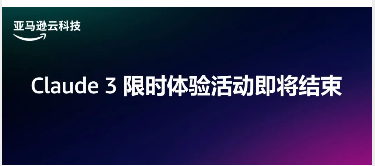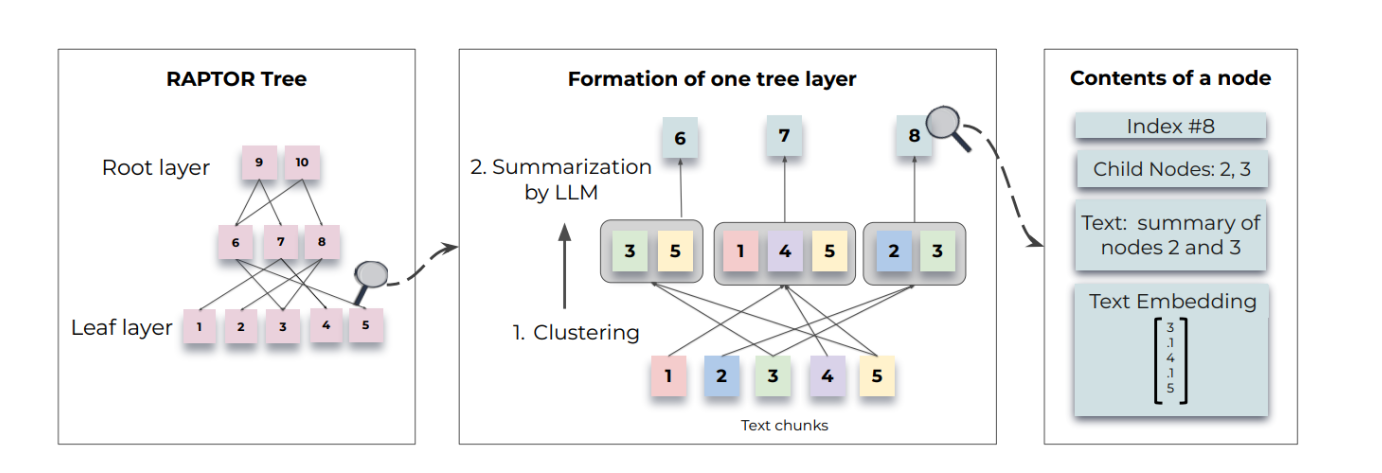基于S2ANet的十字路口无人机影像车辆旋转检测,可用于车辆行为研究
基于S2ANet的十字路口无人机影像车辆旋转检测,可用于车辆行为研究一、项目背景现如今,随着光学成像技术和计算机图像处理技术的发展,无人机获取的影像质量也在不断提高,由于其快速便捷、成像质量高、不影响地面的交通的特点而受到众多交通道路研究者青睐其中一个应用的地方就是使用无人机对复杂路口处进行观测,对车辆进行检测和追踪,研究车辆在复杂路段的行为,为自动驾驶的决策层助力本项目使用UAV-ROD数据集,
转自AI Studio,原文链接:基于S2ANet的十字路口无人机影像车辆旋转检测,可用于车辆行为研究 - 飞桨AI Studio
一、项目背景
-
现如今,随着光学成像技术和计算机图像处理技术的发展,无人机获取的影像质量也在不断提高,由于其快速便捷、成像质量高、不影响地面的交通的特点而受到众多交通道路研究者青睐
-
其中一个应用的地方就是使用无人机对复杂路口处进行观测,对车辆进行检测和追踪,研究车辆在复杂路段的行为,为自动驾驶的决策层助力
-
本项目使用UAV-ROD数据集,基于PaddleDetection提供的旋转目标检测模型对路口影像中的车辆进行检测,检测的结果可用于后续的目标追踪与车辆行为的研究
-
本项目的效果如下:
- 注:视频展示进入项目后看不到
二、数据集介绍与处理
数据集介绍
-
本项目使用数据集为UAV-ROD,是国科大提供的面向无人机的汽车数据集,带有定向边界框,ai studio数据集链接:UAV-ROD
-
数据简介:
- UAV-ROD由1577张图像和30090个汽车类别实例组成,这些实例由定向边界框标注。训练集和测试集中的图像数分别为1150和427
- 国科大使用无人机收集图像,无人机的飞行高度在30米到80米之间。
- 图像场景包括城市道路、停车场、居民区、路边等
- 注:在UAV-ROD中,θ表示车头方向的角度,并按顺时针方向增加。w和h分别代表定向框的宽度和高度
- 在UAV-ROD数据集中,每张图像的平均对象数为19.08,其中每张图像的最大对象数为104

数据集处理
- UAV-ROD数据集中带有角度信息的标注文件是每一张图像对应一个.xml文件,而PaddleDetection提供的S2ANet模型训练的数据加载模块是需要coco格式,因此需要进行数据的格式转换
- 数据转换之后修改相应的配置文件即可
- 注:UAV-ROD数据集中也有coco格式的.json文件,不过只标注了cx cy w h,并没有角度
In [1]
# 解压数据
!unzip -qo data/data129957/UAV_ROD_Data.zip -d .In [2]
# 展示标注的真值
import cv2
import numpy as np
import os
import xml.etree.ElementTree as ET
pi = 3.1415926535
def xywht_to_xyxyxyxy(center_coordinate):
bboxes = np.empty((0, 8),dtype=np.int32)
for rect in center_coordinate:
bbox = cv2.boxPoints(((rect[0], rect[1]), (rect[2], rect[3]), rect[4] * 180 / pi))
bbox = np.int0(bbox)
bbox = np.reshape(bbox, [-1, ])
bboxes = np.vstack((bboxes, [bbox[0], bbox[1], bbox[2], bbox[3], bbox[4], bbox[5], bbox[6], bbox[7]]))
return bboxes
def load_xml(xml_path):
anno_file = os.path.join(xml_path)
with open(anno_file) as f:
tree = ET.parse(f)
r = {
"height": int(tree.findall("./size/height")[0].text),
"width": int(tree.findall("./size/width")[0].text),
}
instances = []
for obj in tree.findall("object"):
cls = obj.find("name").text
bbox = obj.find("robndbox")
bbox = [float(bbox.find(x).text) for x in ["cx", "cy", "w", "h", "angle"]]
instances.append(
{"category": cls, "bbox": bbox}
)
r["annotations"] = instances
return r
def test_one_img(img_path, xml_path):
img = cv2.imread(img_path)
dicts = load_xml(xml_path)
rbbox = []
anno = dicts['annotations']
for a in anno:
rbbox.append(a['bbox'])
bbox = xywht_to_xyxyxyxy(rbbox)
for b in bbox:
p1 = (b[0], b[1])
p2 = (b[2], b[3])
p3 = (b[4], b[5])
p4 = (b[6], b[7])
cv2.line(img, p1, p2, (0, 255, 0), 3)
cv2.line(img, p2, p3, (0, 0, 255), 3) # The red line indicates the heading direction
cv2.line(img, p3, p4, (0, 255, 0), 3)
cv2.line(img, p4, p1, (0, 255, 0), 3)
return img- 可以看到,标注文件的角度是可以反算出车头的位置
In [3]
from PIL import Image
import matplotlib.pyplot as plt
%matplotlib inline
img_dir = r'UAV_ROD_Data/test/images'
xml_dir = r'UAV_ROD_Data/test/annotations'
l = "DJI_0005_000000.jpg"
img_path = os.path.join(img_dir, l)
xml_path = os.path.join(xml_dir, l.split('.')[0] + '.xml')
img = test_one_img(img_path, xml_path)
img = cv2.cvtColor(img, cv2.COLOR_BGR2RGB)
image = Image.fromarray(img)
plt.figure(figsize=(20, 14))
plt.imshow(image), plt.axis('off')
(<matplotlib.image.AxesImage at 0x7f03926ffcd0>, (-0.5, 1919.5, 1079.5, -0.5))

<Figure size 1440x1008 with 1 Axes>
- 数据格式转换,.xml转coco格式
In [4]
# xml数据格式转为COCO格式
import sys
import os
import json
import xml.etree.ElementTree as ET
import tqdm
START_BOUNDING_BOX_ID = 1
PRE_DEFINE_CATEGORIES = {}
# If necessary, pre-define category and its id
PRE_DEFINE_CATEGORIES = {"car": 1}
def get(root, name):
vars = root.findall(name)
return vars
def get_and_check(root, name, length):
vars = root.findall(name)
if len(vars) == 0:
raise NotImplementedError('Can not find %s in %s.'%(name, root.tag))
if length > 0 and len(vars) != length:
raise NotImplementedError('The size of %s is supposed to be %d, but is %d.'%(name, length, len(vars)))
if length == 1:
vars = vars[0]
return vars
def get_filename_as_int(filename):
try:
filename = os.path.splitext(filename)[0]
name_list = filename.split('_')
num = int(''.join(name_list[1:]))
return num
except:
raise NotImplementedError('Filename %s is supposed to be an integer.'%(filename))
def convert(list_fp, xml_dir, json_file):
json_dict = {"images":[], "type": "instances", "annotations": [],
"categories": []}
categories = PRE_DEFINE_CATEGORIES
bnd_id = START_BOUNDING_BOX_ID
for line in tqdm.tqdm(list_fp):
line = line.strip()
#print("Processing %s"%(line))
xml_f = os.path.join(xml_dir, line)
tree = ET.parse(xml_f)
root = tree.getroot()
path = get(root, 'path')
filename = get(root, 'filename')[0].text
# if len(path) == 1:
# filename = os.path.basename(path[0].text)
# elif len(path) == 0:
# filename = get_and_check(root, 'filename', 1).text
# else:
# raise NotImplementedError('%d paths found in %s'%(len(path), line))
## The filename must be a number
image_id = get_filename_as_int(filename)
size = get_and_check(root, 'size', 1)
width = int(get_and_check(size, 'width', 1).text)
height = int(get_and_check(size, 'height', 1).text)
image = {'file_name': filename, 'height': height, 'width': width,
'id':image_id}
json_dict['images'].append(image)
## Cruuently we do not support segmentation
# segmented = get_and_check(root, 'segmented', 1).text
# assert segmented == '0'
for obj in get(root, 'object'):
category = get_and_check(obj, 'name', 1).text
if category not in categories:
new_id = len(categories)
categories[category] = new_id
category_id = categories[category]
bbox = obj.find("robndbox")
bbox = [float(bbox.find(x).text) for x in ["cx", "cy", "w", "h", "angle"]]
bndbox = get_and_check(obj, 'robndbox', 1)
cx = float(get_and_check(bndbox, 'cx', 1).text)
cy = float(get_and_check(bndbox, 'cy', 1).text)
w = float(get_and_check(bndbox, 'w', 1).text)
h = float(get_and_check(bndbox, 'h', 1).text)
angle = float(get_and_check(bndbox, 'angle', 1).text)
ann = {'area': w*h, 'iscrowd': 0, 'image_id':
image_id, 'bbox':[cx, cy, w, h, angle],
'category_id': category_id, 'id': bnd_id, 'ignore': 0,
'segmentation': []}
json_dict['annotations'].append(ann)
bnd_id = bnd_id + 1
for cate, cid in categories.items():
cat = {'supercategory': 'none', 'id': cid, 'name': cate}
json_dict['categories'].append(cat)
json_fp = open(json_file, 'w')
json_str = json.dumps(json_dict)
json_fp.write(json_str)
json_fp.close()
#list_fp.close()
In [5]
# 生成训练集的json文件
xml_dir = r'UAV_ROD_Data/train/annotations'
list_fp = [f for f in os.listdir(xml_dir) if f.endswith('.xml')]
!mkdir UAV_ROD_Data/train/annotation_json
convert(list_fp, xml_dir, 'UAV_ROD_Data/train/annotation_json/train.json')100%|██████████| 1150/1150 [00:00<00:00, 1517.27it/s]
In [6]
# 生成测试集的json文件
xml_dir = r'UAV_ROD_Data/test/annotations'
list_fp = [f for f in os.listdir(xml_dir) if f.endswith('.xml')]
!mkdir UAV_ROD_Data/test/annotation_json
convert(list_fp, xml_dir, 'UAV_ROD_Data/test/annotation_json/valid.json')100%|██████████| 427/427 [00:00<00:00, 1014.45it/s]
In [7]
# 转换数据集名称
!mv UAV_ROD_Data UAV_coco三、环境与训练配置文件准备
环境依赖的安装
- 克隆PaddleDetection仓库,安装对应的依赖和旋转IOU计算的OP
In [8]
# 从码云上克隆仓库
!git clone https://gitee.com/paddlepaddle/PaddleDetection.git正克隆到 'PaddleDetection'... remote: Enumerating objects: 23165, done. remote: Counting objects: 100% (3635/3635), done. remote: Compressing objects: 100% (1765/1765), done. remote: Total 23165 (delta 2580), reused 2667 (delta 1863), pack-reused 19530 接收对象中: 100% (23165/23165), 261.63 MiB | 12.68 MiB/s, 完成. 处理 delta 中: 100% (17129/17129), 完成. 检查连接... 完成。 正在检出文件: 100% (1852/1852), 完成.
In [ ]
# 安装依赖
%cd ~/PaddleDetection/
!pip install -r requirements.txtIn [ ]
# 安装旋转框IOU计算OP,耗时不到一分钟,输出ok即为成功安装
%cd ppdet/ext_op
!python3.7 setup.py install
!python3.7 test.py配置文件的准备
- 主要包括数据、模型、优化、训练四个.yml文件的准备与修改(均已经写好放置于work/UAV 文件夹下):
- 数据文件:针对UAV-ROD数据集的配置,在work文件夹下UAV_coco.yml
- 模型优化文件:修改了学习率,PaddleDetection提供的是8卡训练的学习率配置,修改为原来的1/8训练,在work/UAV/base/s2anet_optimizer_2x.yml
- 模型文件,修改了类别,num_class=1,在work/UAV/base/s2anet.yml
- 训练文件,S2ANet训练UAV-ROD模型,类别改为1,在work/UAV/s2anet_alignconv_2x_uav.yml
In [11]
%cd ~
!cp work/UAV_coco.yml PaddleDetection/configs/datasets/
!cp -r work/UAV PaddleDetection/configs//home/aistudio
四、模型的训练、评估与预测
训练模型并预测
In [12]
# 将数据移动到对应的文件夹
!mv UAV_coco PaddleDetection/dataset/In [ ]
# 训练,这里没有加载预训练模型进行训练
%cd /home/aistudio/PaddleDetection/
!export CUDA_VISIBLE_DEVICES=0
!python3.7 tools/train.py -c configs/UAV/s2anet_alignconv_2x_uav.ymlIn [ ]
# 模型评估,这里有个问题,就是没法跳出循环,因为在aistudio上debug比较难,所以目前还没寻找到原因,暂且跳过
# %cd /home/aistudio/PaddleDetection/
# !python3.7 tools/eval.py -c configs/UAV/s2anet_alignconv_2x_uav.yml \
# -o weights=../work/weights/model_final.pdparams In [ ]
基于S2ANet的十字路口无人机影像车辆旋转检测,可用于车辆行为研究
一、项目背景
-
现如今,随着光学成像技术和计算机图像处理技术的发展,无人机获取的影像质量也在不断提高,由于其快速便捷、成像质量高、不影响地面的交通的特点而受到众多交通道路研究者青睐
-
其中一个应用的地方就是使用无人机对复杂路口处进行观测,对车辆进行检测和追踪,研究车辆在复杂路段的行为,为自动驾驶的决策层助力
-
本项目使用UAV-ROD数据集,基于PaddleDetection提供的旋转目标检测模型对路口影像中的车辆进行检测,检测的结果可用于后续的目标追踪与车辆行为的研究
-
本项目的效果如下:
- 注:视频展示进入项目后看不到
二、数据集介绍与处理
数据集介绍
-
本项目使用数据集为UAV-ROD,是国科大提供的面向无人机的汽车数据集,带有定向边界框,ai studio数据集链接:UAV-ROD
-
数据简介:
- UAV-ROD由1577张图像和30090个汽车类别实例组成,这些实例由定向边界框标注。训练集和测试集中的图像数分别为1150和427
- 国科大使用无人机收集图像,无人机的飞行高度在30米到80米之间。
- 图像场景包括城市道路、停车场、居民区、路边等
- 注:在UAV-ROD中,θ表示车头方向的角度,并按顺时针方向增加。w和h分别代表定向框的宽度和高度
- 在UAV-ROD数据集中,每张图像的平均对象数为19.08,其中每张图像的最大对象数为104

数据集处理
- UAV-ROD数据集中带有角度信息的标注文件是每一张图像对应一个.xml文件,而PaddleDetection提供的S2ANet模型训练的数据加载模块是需要coco格式,因此需要进行数据的格式转换
- 数据转换之后修改相应的配置文件即可
- 注:UAV-ROD数据集中也有coco格式的.json文件,不过只标注了cx cy w h,并没有角度
In [1]
# 解压数据
!unzip -qo data/data129957/UAV_ROD_Data.zip -d .In [2]
# 展示标注的真值
import cv2
import numpy as np
import os
import xml.etree.ElementTree as ET
pi = 3.1415926535
def xywht_to_xyxyxyxy(center_coordinate):
bboxes = np.empty((0, 8),dtype=np.int32)
for rect in center_coordinate:
bbox = cv2.boxPoints(((rect[0], rect[1]), (rect[2], rect[3]), rect[4] * 180 / pi))
bbox = np.int0(bbox)
bbox = np.reshape(bbox, [-1, ])
bboxes = np.vstack((bboxes, [bbox[0], bbox[1], bbox[2], bbox[3], bbox[4], bbox[5], bbox[6], bbox[7]]))
return bboxes
def load_xml(xml_path):
anno_file = os.path.join(xml_path)
with open(anno_file) as f:
tree = ET.parse(f)
r = {
"height": int(tree.findall("./size/height")[0].text),
"width": int(tree.findall("./size/width")[0].text),
}
instances = []
for obj in tree.findall("object"):
cls = obj.find("name").text
bbox = obj.find("robndbox")
bbox = [float(bbox.find(x).text) for x in ["cx", "cy", "w", "h", "angle"]]
instances.append(
{"category": cls, "bbox": bbox}
)
r["annotations"] = instances
return r
def test_one_img(img_path, xml_path):
img = cv2.imread(img_path)
dicts = load_xml(xml_path)
rbbox = []
anno = dicts['annotations']
for a in anno:
rbbox.append(a['bbox'])
bbox = xywht_to_xyxyxyxy(rbbox)
for b in bbox:
p1 = (b[0], b[1])
p2 = (b[2], b[3])
p3 = (b[4], b[5])
p4 = (b[6], b[7])
cv2.line(img, p1, p2, (0, 255, 0), 3)
cv2.line(img, p2, p3, (0, 0, 255), 3) # The red line indicates the heading direction
cv2.line(img, p3, p4, (0, 255, 0), 3)
cv2.line(img, p4, p1, (0, 255, 0), 3)
return img- 可以看到,标注文件的角度是可以反算出车头的位置
In [3]
from PIL import Image
import matplotlib.pyplot as plt
%matplotlib inline
img_dir = r'UAV_ROD_Data/test/images'
xml_dir = r'UAV_ROD_Data/test/annotations'
l = "DJI_0005_000000.jpg"
img_path = os.path.join(img_dir, l)
xml_path = os.path.join(xml_dir, l.split('.')[0] + '.xml')
img = test_one_img(img_path, xml_path)
img = cv2.cvtColor(img, cv2.COLOR_BGR2RGB)
image = Image.fromarray(img)
plt.figure(figsize=(20, 14))
plt.imshow(image), plt.axis('off')
(<matplotlib.image.AxesImage at 0x7f03926ffcd0>, (-0.5, 1919.5, 1079.5, -0.5))

<Figure size 1440x1008 with 1 Axes>
- 数据格式转换,.xml转coco格式
In [4]
# xml数据格式转为COCO格式
import sys
import os
import json
import xml.etree.ElementTree as ET
import tqdm
START_BOUNDING_BOX_ID = 1
PRE_DEFINE_CATEGORIES = {}
# If necessary, pre-define category and its id
PRE_DEFINE_CATEGORIES = {"car": 1}
def get(root, name):
vars = root.findall(name)
return vars
def get_and_check(root, name, length):
vars = root.findall(name)
if len(vars) == 0:
raise NotImplementedError('Can not find %s in %s.'%(name, root.tag))
if length > 0 and len(vars) != length:
raise NotImplementedError('The size of %s is supposed to be %d, but is %d.'%(name, length, len(vars)))
if length == 1:
vars = vars[0]
return vars
def get_filename_as_int(filename):
try:
filename = os.path.splitext(filename)[0]
name_list = filename.split('_')
num = int(''.join(name_list[1:]))
return num
except:
raise NotImplementedError('Filename %s is supposed to be an integer.'%(filename))
def convert(list_fp, xml_dir, json_file):
json_dict = {"images":[], "type": "instances", "annotations": [],
"categories": []}
categories = PRE_DEFINE_CATEGORIES
bnd_id = START_BOUNDING_BOX_ID
for line in tqdm.tqdm(list_fp):
line = line.strip()
#print("Processing %s"%(line))
xml_f = os.path.join(xml_dir, line)
tree = ET.parse(xml_f)
root = tree.getroot()
path = get(root, 'path')
filename = get(root, 'filename')[0].text
# if len(path) == 1:
# filename = os.path.basename(path[0].text)
# elif len(path) == 0:
# filename = get_and_check(root, 'filename', 1).text
# else:
# raise NotImplementedError('%d paths found in %s'%(len(path), line))
## The filename must be a number
image_id = get_filename_as_int(filename)
size = get_and_check(root, 'size', 1)
width = int(get_and_check(size, 'width', 1).text)
height = int(get_and_check(size, 'height', 1).text)
image = {'file_name': filename, 'height': height, 'width': width,
'id':image_id}
json_dict['images'].append(image)
## Cruuently we do not support segmentation
# segmented = get_and_check(root, 'segmented', 1).text
# assert segmented == '0'
for obj in get(root, 'object'):
category = get_and_check(obj, 'name', 1).text
if category not in categories:
new_id = len(categories)
categories[category] = new_id
category_id = categories[category]
bbox = obj.find("robndbox")
bbox = [float(bbox.find(x).text) for x in ["cx", "cy", "w", "h", "angle"]]
bndbox = get_and_check(obj, 'robndbox', 1)
cx = float(get_and_check(bndbox, 'cx', 1).text)
cy = float(get_and_check(bndbox, 'cy', 1).text)
w = float(get_and_check(bndbox, 'w', 1).text)
h = float(get_and_check(bndbox, 'h', 1).text)
angle = float(get_and_check(bndbox, 'angle', 1).text)
ann = {'area': w*h, 'iscrowd': 0, 'image_id':
image_id, 'bbox':[cx, cy, w, h, angle],
'category_id': category_id, 'id': bnd_id, 'ignore': 0,
'segmentation': []}
json_dict['annotations'].append(ann)
bnd_id = bnd_id + 1
for cate, cid in categories.items():
cat = {'supercategory': 'none', 'id': cid, 'name': cate}
json_dict['categories'].append(cat)
json_fp = open(json_file, 'w')
json_str = json.dumps(json_dict)
json_fp.write(json_str)
json_fp.close()
#list_fp.close()
In [5]
# 生成训练集的json文件
xml_dir = r'UAV_ROD_Data/train/annotations'
list_fp = [f for f in os.listdir(xml_dir) if f.endswith('.xml')]
!mkdir UAV_ROD_Data/train/annotation_json
convert(list_fp, xml_dir, 'UAV_ROD_Data/train/annotation_json/train.json')100%|██████████| 1150/1150 [00:00<00:00, 1517.27it/s]
In [6]
# 生成测试集的json文件
xml_dir = r'UAV_ROD_Data/test/annotations'
list_fp = [f for f in os.listdir(xml_dir) if f.endswith('.xml')]
!mkdir UAV_ROD_Data/test/annotation_json
convert(list_fp, xml_dir, 'UAV_ROD_Data/test/annotation_json/valid.json')100%|██████████| 427/427 [00:00<00:00, 1014.45it/s]
In [7]
# 转换数据集名称
!mv UAV_ROD_Data UAV_coco三、环境与训练配置文件准备
环境依赖的安装
- 克隆PaddleDetection仓库,安装对应的依赖和旋转IOU计算的OP
In [8]
# 从码云上克隆仓库
!git clone https://gitee.com/paddlepaddle/PaddleDetection.git正克隆到 'PaddleDetection'... remote: Enumerating objects: 23165, done. remote: Counting objects: 100% (3635/3635), done. remote: Compressing objects: 100% (1765/1765), done. remote: Total 23165 (delta 2580), reused 2667 (delta 1863), pack-reused 19530 接收对象中: 100% (23165/23165), 261.63 MiB | 12.68 MiB/s, 完成. 处理 delta 中: 100% (17129/17129), 完成. 检查连接... 完成。 正在检出文件: 100% (1852/1852), 完成.
In [ ]
# 安装依赖
%cd ~/PaddleDetection/
!pip install -r requirements.txtIn [ ]
# 安装旋转框IOU计算OP,耗时不到一分钟,输出ok即为成功安装
%cd ppdet/ext_op
!python3.7 setup.py install
!python3.7 test.py配置文件的准备
- 主要包括数据、模型、优化、训练四个.yml文件的准备与修改(均已经写好放置于work/UAV 文件夹下):
- 数据文件:针对UAV-ROD数据集的配置,在work文件夹下UAV_coco.yml
- 模型优化文件:修改了学习率,PaddleDetection提供的是8卡训练的学习率配置,修改为原来的1/8训练,在work/UAV/base/s2anet_optimizer_2x.yml
- 模型文件,修改了类别,num_class=1,在work/UAV/base/s2anet.yml
- 训练文件,S2ANet训练UAV-ROD模型,类别改为1,在work/UAV/s2anet_alignconv_2x_uav.yml
In [11]
%cd ~
!cp work/UAV_coco.yml PaddleDetection/configs/datasets/
!cp -r work/UAV PaddleDetection/configs//home/aistudio
四、模型的训练、评估与预测
训练模型并预测
In [12]
# 将数据移动到对应的文件夹
!mv UAV_coco PaddleDetection/dataset/In [ ]
# 训练,这里没有加载预训练模型进行训练
%cd /home/aistudio/PaddleDetection/
!export CUDA_VISIBLE_DEVICES=0
!python3.7 tools/train.py -c configs/UAV/s2anet_alignconv_2x_uav.ymlIn [ ]
# 模型评估,这里有个问题,就是没法跳出循环,因为在aistudio上debug比较难,所以目前还没寻找到原因,暂且跳过
# %cd /home/aistudio/PaddleDetection/
# !python3.7 tools/eval.py -c configs/UAV/s2anet_alignconv_2x_uav.yml \
# -o weights=../work/weights/model_final.pdparams In [ ]
# 数据预测,使用的权重为事先保存好的权重,位置在work/weights
# 可以使用自己训练得到的权重,修改weights后的路径即可
# infer_dir 为自己要预测的图像所在文件夹位置
%cd /home/aistudio/PaddleDetection/
!python3.7 tools/infer.py -c configs/UAV/s2anet_alignconv_2x_uav.yml -o weights=../work/weights/model_final.pdparams \
--infer_dir=../work/inputs --draw_threshold=0.5 --output_dir=../work/outputs展示预测结果
In [15]
import matplotlib.pyplot as plt
from PIL import Image
%matplotlib inline
image = Image.open('../work/outputs/DJI_0005_000000.jpg')
plt.figure(figsize=(20, 14))
plt.imshow(image), plt.axis('off')(<matplotlib.image.AxesImage at 0x7f038188be50>, (-0.5, 1919.5, 1079.5, -0.5))

<Figure size 1440x1008 with 1 Axes>
五、总结
不足之处
- 数据层面:UAV-ROD数据标注了所有车辆为car这一类型,没有进一步细分,如果遇到公交车、卡车等大型车会影响准确率
- 模型后处理层面:标注角度时,UAV-ROD数据集使用车头方向判断,而PaddleDetection则是通过长和宽判断角度,所以输出的结果不能显示出车头方向
下一步工作
- 个人第一次接触PaddleDetection,下一步会学习有关目标追踪的内容,应用到这个项目的输出结果中
# 数据预测,使用的权重为事先保存好的权重,位置在work/weights
# 可以使用自己训练得到的权重,修改weights后的路径即可
# infer_dir 为自己要预测的图像所在文件夹位置
%cd /home/aistudio/PaddleDetection/
!python3.7 tools/infer.py -c configs/UAV/s2anet_alignconv_2x_uav.yml -o weights=../work/weights/model_final.pdparams \
--infer_dir=../work/inputs --draw_threshold=0.5 --output_dir=../work/outputs展示预测结果
In [15]
import matplotlib.pyplot as plt
from PIL import Image
%matplotlib inline
image = Image.open('../work/outputs/DJI_0005_000000.jpg')
plt.figure(figsize=(20, 14))
plt.imshow(image), plt.axis('off')(<matplotlib.image.AxesImage at 0x7f038188be50>, (-0.5, 1919.5, 1079.5, -0.5))

<Figure size 1440x1008 with 1 Axes>
五、总结
不足之处
- 数据层面:UAV-ROD数据标注了所有车辆为car这一类型,没有进一步细分,如果遇到公交车、卡车等大型车会影响准确率
- 模型后处理层面:标注角度时,UAV-ROD数据集使用车头方向判断,而PaddleDetection则是通过长和宽判断角度,所以输出的结果不能显示出车头方向
下一步工作
- 个人第一次接触PaddleDetection,下一步会学习有关目标追踪的内容,应用到这个项目的输出结果中
更多推荐
 已为社区贡献1436条内容
已为社区贡献1436条内容










所有评论(0)